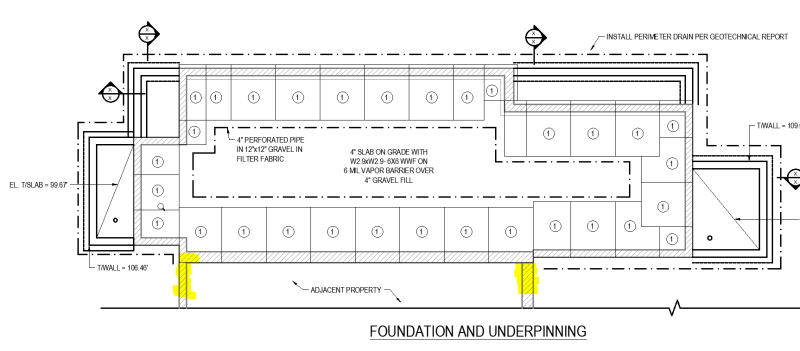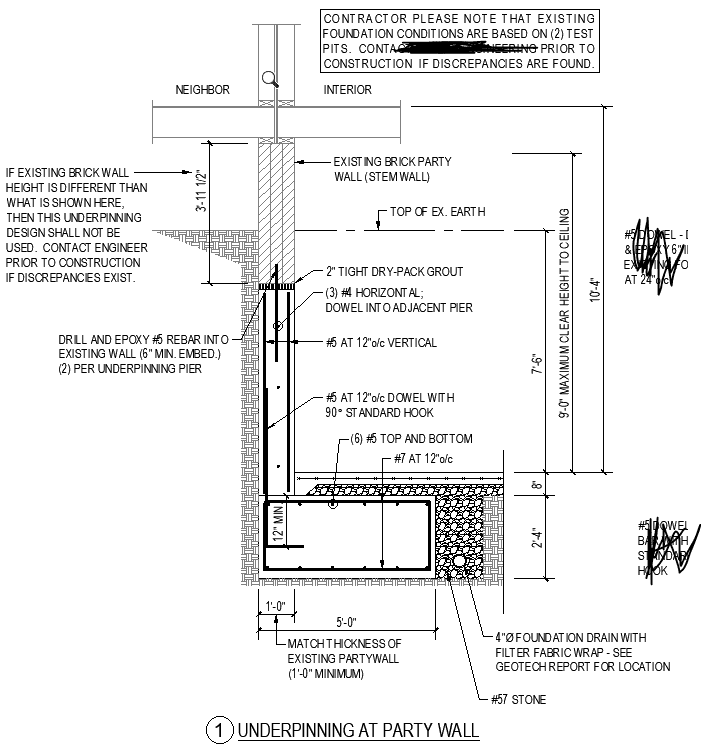The title says it all. I have a rowhouse that will get deep underpinning - see plan and detail below. We are going from a crawl space to a full basement.
Logic tells me that I should underpin the neighbor's front and rear wall (highlighted yellow in plan). Perhaps this can be done with helical piles? I am not sure if I am allowed to show that on permit drawings without getting special permission from the neighbor. PS, I am obviously not finished with the sequencing of the plan, so no need to point that out.


Logic tells me that I should underpin the neighbor's front and rear wall (highlighted yellow in plan). Perhaps this can be done with helical piles? I am not sure if I am allowed to show that on permit drawings without getting special permission from the neighbor. PS, I am obviously not finished with the sequencing of the plan, so no need to point that out.


